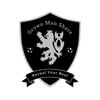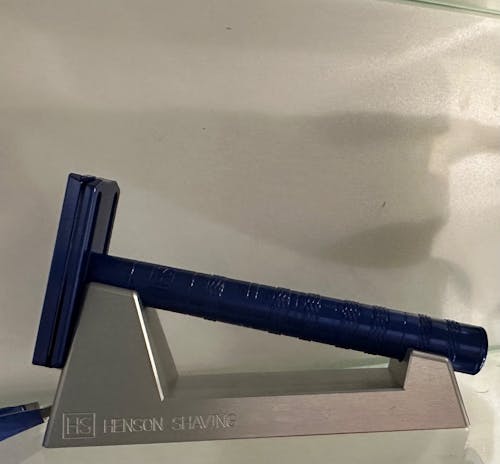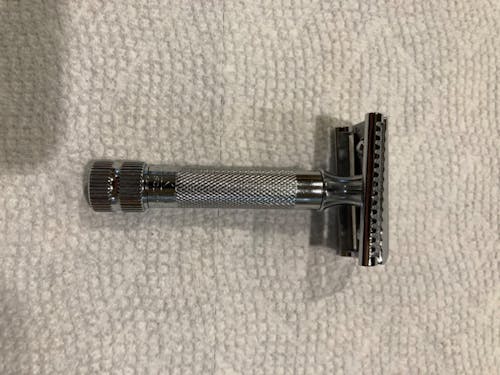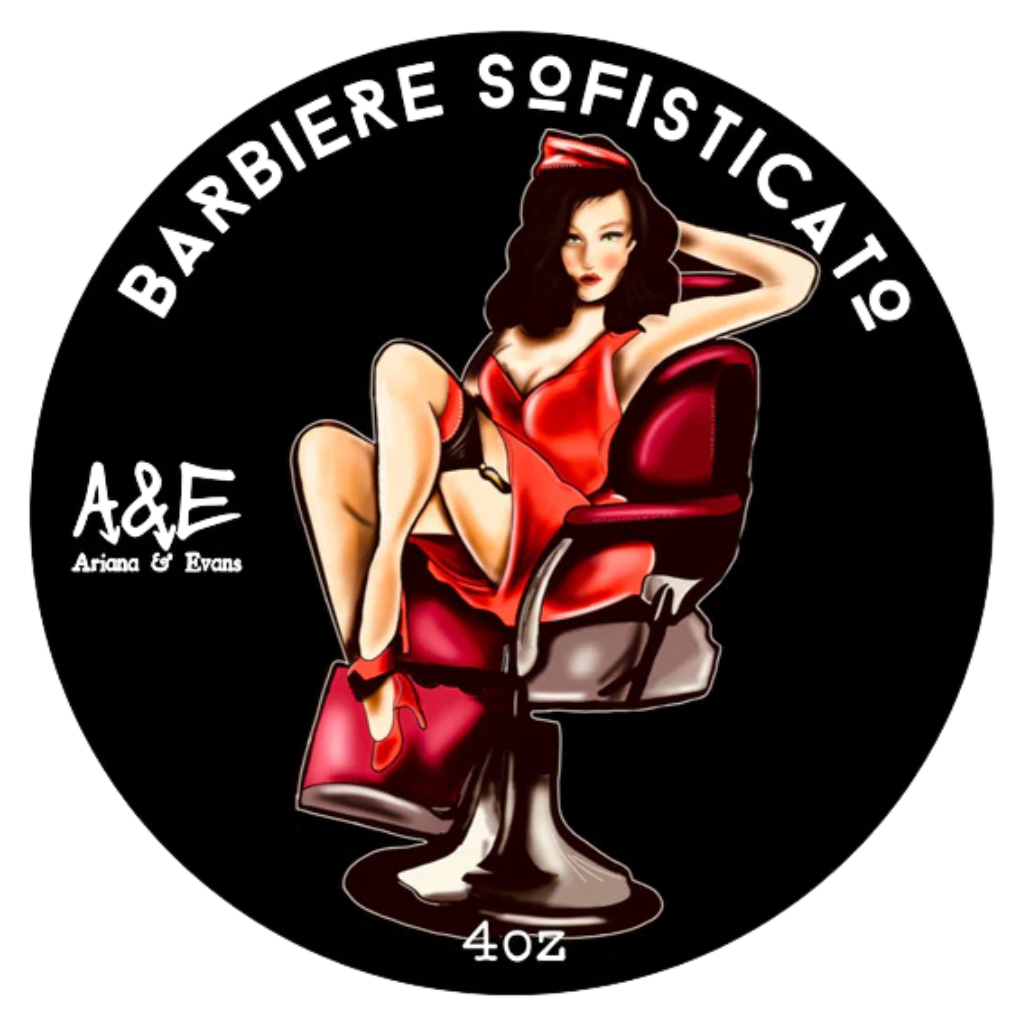A long, long time ago, men would use sea sponges to lather up their faces and trim their whiskers. Fortunately, the French aristocracy invented the shaving brush in the mid-18th century, and that’s what we’ve been using ever since. As fun, as it would be to go diving in the sea to procure your wet shaving kit, having a dedicated tool like the shaving brush saves a lot of time.
But how do you know how a good shaving brush feels if you've never used one?
When trying a shaving brush for the first time, consider the following factors. Does it have a suitable backbone? Backbone, or flex as it's sometimes called, refers to the stiffness attributed to the knot of the shaving brush. How soft are the bristles? Will it work better with shaving soap or foam? What about a badger shaving brush? How does badger hair help? Do I need a shaving bowl?
Relax! We've compiled this article so that you, too, can be a veritable expert when it comes to how to buy the very best shaving brush, how to use a shaving brush, what it can do for your facial hair, what types of shaving brushes there are, and their history and construction.
There are various fine brushes available, and Grown Man Shave carries three types of shaving brushes: badger hair, boar hair, and synthetic brushes.

Brief History of Shaving Brushes
The shaving brush was invented sometime between the 17th and 18th centuries in the upper classes of Western Europe, but most likely in France. Shaving brushes became commonplace as beards became a symbol of lower-class status. In contrast, a clean-shaven face or a face with a trimmed mustache became the fashion among the nobility.
As a result of this change, tools, and products were developed to facilitate the nobles' pursuit of a clean-shaven face free of irritation and cuts. Along with shaving soaps, shaving creams, and new straight razors, the shaving brush was also a popular accessory. As with all the aristocracy's choices regarding the manufacture of brushes, second-best would never have been an option while experiments with horsehair brushes and boar bristle brushes were underway. The early gold standard, however, was the primacy of badger brushes in terms of brushes made from natural hair.
The shaving brush has a long and storied history—one that is steeped in greed, warfare, and ingenuity. You can read more about it here.
The Advantages of Shaving Brushes
A shaving brush isn't simply a fun, fuzzy-looking tool to have on display in your bathroom. It serves a very important purpose. Shaving can be a traumatic experience for your face. Facial skin is among the most sensitive on the body, and the shaving brush has been developed to help alleviate skin sensitivity.
The bristles of a shaving brush are designed to be both malleable and firm, providing a gentle exfoliation for your face before a shave. This allows your pores to open up and become prepared for the relative harshness of the razor.
There are many advantages to shaving brushes, most of which are practical, as they enhance the wet shaving experience, but also in terms of style. As we mentioned at the beginning, shaving brushes originally served as a status symbol and continue to do so today.
The Anatomy of a Shaving Brush
Shaving brushes are composed of two essential components: the handle and the brush. The hair of your brush, whether it be made of natural or synthetic materials, will be attached to the handle of the brush with powerful epoxy glue. Shaving brushes vary in the construction and materials of their handles, as well as the knot and loft height of their bristles.
What do handles on shaving brushes do?
The handle is just that - the part of the brush that you hold in your hand. Handles can be made from a variety of different materials, although they are most often made from wood, metal, or resin these days. Handles are often short, unlike the handles of, for instance, a hairbrush or a toothbrush. Shaving brushes are designed to be held at your fingertips, not in your fists.
What is a shaving brush knot?
You will often see the descriptors of 'knot and loft' when shaving brushes are being described. Knot refers to the width of the hair spread in the brush itself. While all shaving brushes feature the classic concave design, you will notice in photos that some have a narrower concave shape while others have a wider one. Traditionally, a wider knot means that there is more hair in the brush. More hair means more luxurious brushes, which in turn result in a better shave.
The knot is formed by gathering the bristles tightly together, shaping them into a dome or fan, and securing them into the brush handle with strong adhesive. Several factors define a knot's performance, including its knot size (the diameter at the base), loft (the height of the bristles above the handle), and density (the degree to which the bristles are tightly packed). These characteristics influence the brush’s water retention, lathering ability, softness, and backbone. In essence, the knot is the heart of the shaving brush, determining much of how it feels and performs during a shave.
Knot size refers to the diameter of the shaving brush's bristle bundle at the point where it meets the handle, usually measured in millimeters (mm). Here are some common examples of shaving brush knot sizes:
-
18–20mm – Small: Ideal for precise lathering and easy control, often preferred for travel brushes.
-
22–24mm – Medium: The most popular size range, offering a balance between coverage and maneuverability.
-
26–28mm – Large: Creates a luxurious, full-face lather quickly, great for those who enjoy a rich, indulgent shave.
-
30mm and above – Extra-Large: Massive knots that deliver huge amounts of lather; typically chosen by serious wet shaving enthusiasts who love an opulent experience.
Each knot size affects how much lather you can generate, how the brush feels in your hand, and how easily it moves across your face. Larger knots tend to feel plusher but can use up more soap, while more minor knots offer more control and precision.

What is a shaving brush loft?
The loft of a hair-shaving brush refers to how long the bristles are in the brush. The higher the loft, the greater the flexibility in the bristles and the more of the face they can reach when used. However, the length can also lead to the bristles being less stable and more prone to damage, which makes a shorter loft sometimes desirable. Again, your personal preference should guide you.
How to Use Your Shaving Brush
While we go into more detail about wet shaving, here's how to best use your new shaving brush:
- When you use a shaving brush, always start by soaking it in warm water. This will warm up the brush for use by giving the hair time to saturate.
- Apply shaving cream, shaving foam, or shaving soap to your brush after it has had time to prime. Depending on the product you use, its directions will often vary on how to apply it best. Typically, this involves applying a small amount to the middle of your brush and mixing it in a shaving mug or shaving bowl. Once you have a lather, you're ready.
- Lather up your face by using small, circular brush strokes on your face (or the area you're shaving). This motion will allow for the maximum distribution of your lather and ensure it reaches every hair follicle.
- Shave! We also have a step-by-step guide available here.
The Different Types of Shaving Brushes

Badger Hair Brushes
Badger hair shaving brushes are renowned for their exceptional quality and luxurious feel, making them a favorite among traditional wet shaving enthusiasts. Known for their superior water retention and softness, badger hair brushes effortlessly create a rich, creamy lather, elevating the shaving experience.
Badger hair brushes come in various grades—Pure, Best, Super, and Silvertip—each offering a different level of softness, density, and price point. Silvertip badger brushes, in particular, are prized for their ultra-soft tips and dense bristle heads, which gently exfoliate the skin, lift whiskers, and evenly distribute shaving cream or soap. While they may require a higher investment, badger hair brushes, when correctly cared for, can last for many years, making them an excellent long-term addition to any grooming routine.

Wet shavers all over the world agree that badger hairs are the best nature has to offer for a great shave. There’s simply nothing else that comes close. Brushes with boar bristles and horse hairs do work, but they’re stiffer, coarser, and not as pleasant to the touch—and face—as badger hairs.
All badger hairs come from China, where the badger is not only unendangered but classified as a pest and culled annually.
|
Pros
|
Cons
|
Boar Bristle Shaving Brushes
Boar bristle shaving brushes are a popular choice among wet shaving enthusiasts who appreciate the firmness of the bristles and their excellent exfoliating power. Known for their stiffer texture, boar brushes effectively lift facial hair and gently exfoliate the skin, prepping it for a close, irritation-free shave. Although initially rougher compared to badger brushes, boar bristles soften significantly after several uses, becoming more comfortable and better at retaining water and lathering over time.
Additionally, boar brushes offer tremendous value—they are generally more affordable than their badger counterparts while still providing durability and excellent performance. Ideal for those seeking a practical, effective, and budget-friendly shaving accessory, a well-cared-for boar brush can provide years of satisfying shaves.

Boar shaving brushes do not quite rival the most luxurious brushes, such as those made from badger hair, but they have their advantages. Boar brushes hold less water and lather than badger hair, but they also filter out water that can sometimes oversaturate a lather when using badger hair, which is very absorbent. A boar brush is also coarser than badger hair, meaning it can help exfoliate dry skin before shaving.
|
Pros
|
Cons
|
Horsehair Shaving Brushes
Horsehair shaving brushes are a distinctive, cruelty-free option highly appreciated by wet shaving enthusiasts looking for an ethical alternative. Made primarily from mane and tail hair collected during routine grooming, these brushes strike a balance between the softness of badger hair and the firm exfoliation of boar bristles.
Horsehair brushes effectively generate rich lather while gently lifting hairs, preparing the skin for a smooth and comfortable shave. They also dry relatively quickly, reducing maintenance effort and prolonging the brush's lifespan. Offering excellent value, durability, and performance, horsehair shaving brushes are an ideal choice for those seeking an affordable and environmentally conscious addition to their grooming routine.

While horse hair brushes have gone out of style compared to the boar brush and the always-classic badger shaving brush, horse hair shaving brushes can still be found if you look hard enough. However, we do not carry horse hair shaving brushes in stock.
|
Pros
|
Cons
|
Types of Badger Hair Shaving Brushes

Best Badger Hair Shaving Brushes
Best Badger hair shaving brushes are a popular mid-range option that offers an excellent blend of softness, density, and performance at a more accessible price point than higher-grade Silvertip brushes. Made from the finer hairs found on the badger’s body, Best Badger brushes hold a generous amount of water and create a rich, luxurious lather with ease.
Best Badger hair shaving brushes offer a pleasant balance between softness and gentle exfoliation, making them ideal for shavers who desire a refined, comfortable feel without compromising effectiveness. With proper care, a Best Badger brush can last for many years, providing a satisfying and elevated shaving experience that bridges the gap between affordability and luxury.

Best Badger or Best Badger Hair Brushes are an upgrade from pure hair and the most affordable quality Badger Brushes we stock. They are generally darker and slightly firmer than either Super Badger hair or Silvertip Badger hair and come from the back and sides of the badger or from the belly, where the hairs are more pliable, finer, and longer. They still do the job admirably, retain water more effectively than pure hair, and create a good lather. They make for a great starter brush and are certainly better than using a sea sponge.
|
Pros
|
Cons
|
Super Badger Hair Shaving Brushes
Super Badger hair shaving brushes are a premium choice, crafted from the finest badger hairs that offer exceptional softness, density, and water retention. Often mistaken for Silvertip due to their luxurious feel, Super Badger brushes feature specially selected hairs from the back of the badger and are carefully processed to enhance their natural softness and appearance.
Super Badger hair shaving brushes produce a rich, creamy lather with minimal effort and feel incredibly gentle against the skin, making them ideal for those with sensitive skin or anyone seeking a truly indulgent shave. Though more expensive than Pure or Best Badger brushes, Super Badger brushes deliver an unparalleled combination of performance, comfort, and durability, making them a worthwhile investment for serious wet shavers.

Super Badger is finer and softer than Best Badger Hair. As such, more are required to fill the badger brush, hence the price difference. A black band goes around the midsection of Super Badger's hair, transitioning into a mellow golden white towards the top.
|
Pros
|
Cons
|
Silvertip Badger Hair Shaving Brushes
Silvertip Badger hair shaving brushes are considered the pinnacle of luxury in the world of wet shaving, prized for their unmatched softness, superior water retention, and exquisite craftsmanship. Made from the rare, naturally silver-tipped hairs found on the badger’s neck area, these brushes create a wealthy, creamy lather while feeling supremely gentle on the skin. Silvertip bristles have a distinctive natural color and require minimal processing, preserving their delicate structure and enhancing their performance.
Perfect for sensitive skin and those who value a truly indulgent shaving ritual, Silvertip brushes offer a plush, cloud-like experience that transforms everyday shaving into a moment of pure refinement. While they come at a premium price, their durability, beauty, and unparalleled comfort make them a treasured addition to any serious shaving kit.

Silvertip hairs are found in the neck area of the badger. These badger brushes are the highest quality—most luxurious, plushest, softest, and finest silvertip hairs. Silvertips are by far the rarest and most desirable of badger hair and have been the gold standard of badger hair brushes since they were first made.
|
Pros
|
Cons
|
How Badger Shaving Brushes Are Made
Badger shaving brushes of the highest quality are still crafted in much the same romantic way as the French did in the previous millennium—by hand and using traditional tools.
First, the hairs are weighed to ensure that each brush gets the same, abundant amount. They are then inserted, head-first, into a concave metal mold to give them the signature dome-like shape. Next, the bundle—as it is called—is tied, the bottoms of the hairs sheared off, and stray hairs removed by going through it with a fine-toothed comb. Finally, the hairs are carefully glued into the handle using special, near-indestructible epoxy.
A variety of materials may be used for the handle. In the past, when brushes were a status symbol, it was not uncommon to see handles made from ivory or even gold.
The handles on the brushes we carry are made from wood, metal, or the highest quality resin, designed to imitate ivory, ebony, or horn.
Synthetic Brushes

If badger hairs are the best nature has to offer to the wet shaver, then synthetic brushes—the ones we carry, that is!—are the best man has to offer. The properties that make badger hairs so soft and effective for whipping up luxurious lather have been carefully studied and reproduced by man-made synthetic bristle fibers. But it is only recently that synthetic brushes have been regarded seriously — it took time for technology to catch up with nature.
As to the question of which is better—badger hair or synthetic brushes—that’s a subjective matter that every wet shaver will have to decide for himself.
The advantages of a synthetic shaving brush are that it’s vegan and cruelty-free and that because the fibers don’t soak up water, less lather is needed to shave.
In terms of care, because synthetic fibers don’t soak up water like natural hairs of fine brushes, they’ll dry much faster than natural hair and will not develop mildew. They should still be allowed to dry thoroughly between shaves, though, just like badger shaving brushes.
Choosing the Best Badger Brush
The best badger brush is the one that best suits your needs at the moment. A budget-friendly and easy-to-maintain badger brush is one of our best options. If you're looking for something mid-range with a beautiful tricolor array of hair, super badger brushes may be up your alley. If you're looking for the optimal shaving brush from the finest hair on the badger's body, then a Silvertip brush should be your choice.
Caring for Your Shaving Brushes
The brushes we carry are made with great dedication and expertise and should easily last for more than a decade and even longer. Like any other carefully crafted object, though, they do require the right kind of care.
It is of utmost importance that the brush is thoroughly cleaned and dried between shaves. You should start by rinsing it thoroughly after each shave. Then, please give it a few good, vigorous shakes over the sink until water no longer comes out.

Shaving Brush Stand
Using a shave brush stand is essential for maintaining the longevity and performance of your shaving brush. After use, a brush retains moisture deep within the knot, and if left to dry improperly—especially when standing upright—water can seep into the base, weakening the glue and causing the bristles to shed over time.
A proper stand suspends the brush bristles down, allowing gravity to pull excess water away from the handle and promoting faster, more thorough drying. This not only helps preserve the brush’s shape and softness but also prevents the buildup of mold, mildew, and unpleasant odors. For anyone investing in a quality shaving brush, a stand isn’t just a nice accessory—it’s an essential tool for protecting that investment and ensuring years of optimal shaving performance.
Check out shaving brush stands.

In case you don’t have one, you can leave it standing upright. Either way, your brush should be stored in a cool, dry place with some ventilation—not inside your medicine cabinet or in the shower stall.
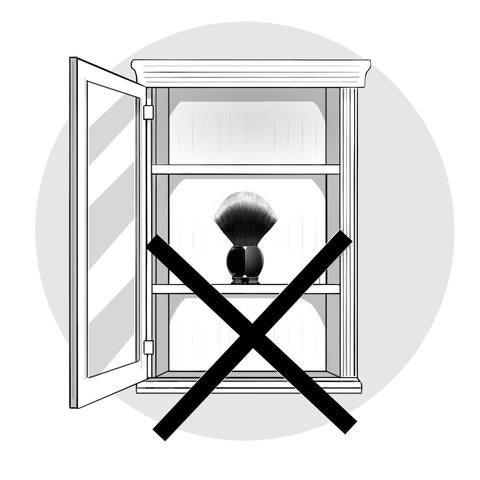
If, for whatever reason, the hairs develop mildew, you can soak them in a solution of borax, which can be obtained from any pharmacy.
Shaving Brush Frequently Asked Questions
Q: Why is a good-quality shaving brush essential?
A: A high-quality brush will bring out the best in each aspect of shaving. A comfortable shave is essential, so investing in a quality shaving brush is equally important. Depending on the quality of your brush, you can expect a better-wet shaving experience - each aspect of a good brush builds on the next: the fineness of the bristles will impact the lathering process. This will make a richer lather from your lathering soaps or shaving cream. The richer the lather, the smoother the shave. All of this is built on the quality of your shaving brush.
Q: Do shaving brushes make a better shave?
A: The short answer to this is yes.
The long answer for this is that the badger hair in the shaving brush is also designed to whip up the shaving cream into a nice lather, and the richer the lather, the less resistance there will be when using your razor. The shaving brush bristles are also great for ensuring that the lather is evenly distributed around, between, and over each hair follicle on your face rather than just being applied with your hands. All around, shaving brushes make shaving easier on your face.
Q: Do you need a brush for shaving soap?
A: Yes - to best use shaving soap, shaving foam, or shaving cream, you'll want to use a shaving brush. Shaving brushes and their fine bristles are designed to maximize the efficiency of soap or cream, creating a rich lather that cannot be produced simply by using your hands or another tool.
This lather will help give you a smoother shave and keep your facial skin optimal after a wet shave.
Q: What shaving brush should you buy?
A: Your shaving brush should be precisely what you want it to be. We can explain the trends, aspects, and various things that other people find meaningful and relevant, but ultimately, it should be up to you to determine what kind of shaving brush suits your personal preference.
Q: How do I choose the right shaving brush?
A: The best choice of a shaving brush is based on what you prize most - is it the highest quality, top-of-the-line brush? You are best served with a silvertip badger brush (see below or above for an in-depth explanation of the different badger brushes). Are you looking for a more rugged texture on your face? Boar shaving brushes might be up your alley. Are you looking for something that is completely cruelty-free and vegan? We'd recommend a synthetic shaving brush.
However, there are more considerations than simply the quality of the brush bristles. You'll be holding this tool in your hand every morning if you're a daily shaver - so having a handle that suits your comfort and needs might be your top consideration.
Our recommendation for choosing the right shaving brush is first to determine what you specifically want from your shaving brush. With any brush, you'll get a good, wet shave and a smooth face, but consider what's most important to you in terms of bells and whistles. From there, explore our extensive selection to find the brush that best suits you.
Q: How often should I replace my shaving brush?
A: You'll often conclude that a shaving brush should last around 10 years. However, there are some important caveats to this.
All shaving brushes shed, especially those made from badger hair, but this shouldn't be an indication of their longevity. Boar bristles will also be a little more brittle than the other, softer bristles used in brushes. As a result, this type of brush may need to be replaced sooner than, say, a brush made entirely of pure badger hair.
Synthetic shaving brushes have a longer lifespan than shaving brushes that use animal hair like boar brushes, horse hair, or badger brushes. You're unlikely to need to replace something with synthetic bristles before 15 years.
Additionally, there is the consideration of how you care for and maintain your shaving brush. If you don't properly care for your shaving brush, such as leaving it resting on its handle instead of hanging it upside down with a brush stand, you will surely decrease the brush's lifespan.
What can I do about shedding?
A: Shedding is inevitable, especially with a new brush, so please don't panic and send us an email complaining that we didn't warn you - consider this your first warning.
Brush shedding usually occurs within the first few shaves. We estimate that by your fifteenth or twentieth shave with your shaving brush, the hair will stop shedding. Shedding, of course, occurs a little less with synthetic bristles since it is not a badger hair brush with actual animal hair being used.
If, however, hairs continue to come off after the first three or so months of use, it's time to inspect the brush. First, note what kind of hairs are coming off - are they full-length bristles that have glue on the bottom? Or are they short hairs?
Short hairs coming off your brush may mean breaking rather than shedding - it means that, somehow, the hairs are becoming brittle and breaking off when being used. This will often happen if you don't let the brush soak in warm water before use. Hot water can sometimes cause the epoxy glue to fracture, but cold water or no water at all means that the hairs in your shaving brush don't have a chance to warm up before a shave and may thus be too rigid to perform their job, potentially breaking.
It is also important to remember that in the case of badger brushes (or boar or horse hair shaving brushes), they are still made of hair and should thus be treated like you'd treat your hair. From time to time, they could do a good job of washing with shampoo and combing to remove any stray shedding hair.
If, however, your brush continues to lose hair despite your best efforts to maintain it, it is time to contact the manufacturer of your shaving brush and ask for a replacement, as there may have been an issue in the manufacturing process.
Lathering & Wet Shaving
Lathering shave soap is a fundamental skill in wet shaving that transforms a simple grooming routine into a luxurious ritual. To create a rich, protective lather, you typically start by soaking your shaving brush in warm water to soften the bristles, then load the brush by swirling it firmly over the surface of the shave soap.
Once loaded with enough product, you either build the lather directly on your face or in a separate bowl, adding small amounts of water as needed to achieve a creamy, dense texture. A well-crafted leather cushions the skin, lifts the hair for a closer shave, and provides essential lubrication that helps prevent irritation, razor burn, and nicks. Mastering the art of lathering not only enhances the comfort and closeness of your shave but also elevates the entire experience into a mindful, satisfying ritual.
Check out this fantastic tutorial on lathering.
Summary Guide to Shaving Brushes
The guide delves into the history, types, and characteristics of various brushes—including badger, boar, and synthetic—highlighting their unique benefits and considerations. It emphasizes the importance of factors such as bristle softness, backbone, and water retention in achieving a superior lather and comfortable shave. By understanding these elements, you are better equipped to select a shaving brush that aligns with your personal preferences and skin type. Ultimately, the guide encourages embracing the ritual of wet shaving, transforming it from a daily chore into a refined grooming experience.
Updated April 2025
